A trip to Athens in Greece is incomplete unless you have visited the Sacred Acropolis Hill of Athens. The Acropolis of Athens, a UNESCO-listed World Heritage, is the most striking and complete ancient Greek monumental complex still existing in our times.
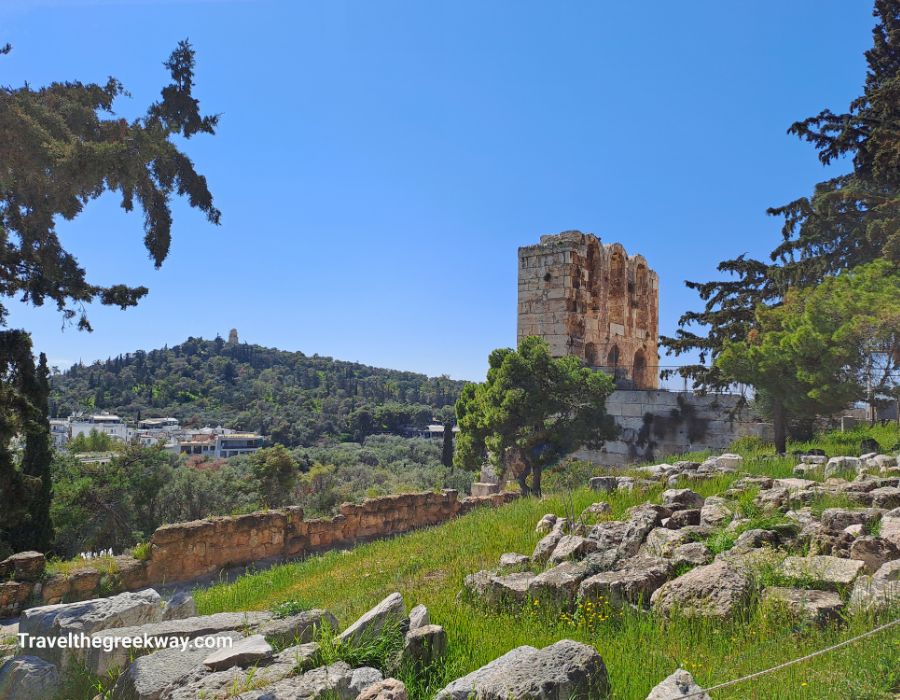
You will love this post if you have questions about the Acropolis Hill of Athens but have little time to review every historical detail. I have all the basic information about the Acropolis in Athens in short questions and answers.
Some of the links below are affiliate links. This means I may earn a commission if you click and make a purchase, at no extra cost to you!
In the meantime, let’s find out all about the Acropolis of Athens!
My Latest Acropolis Video
Walk with me and visit the most important monuments on the spectacular Acropolis Hill!
1. Are the Acropolis of Athens and the Parthenon the Same?
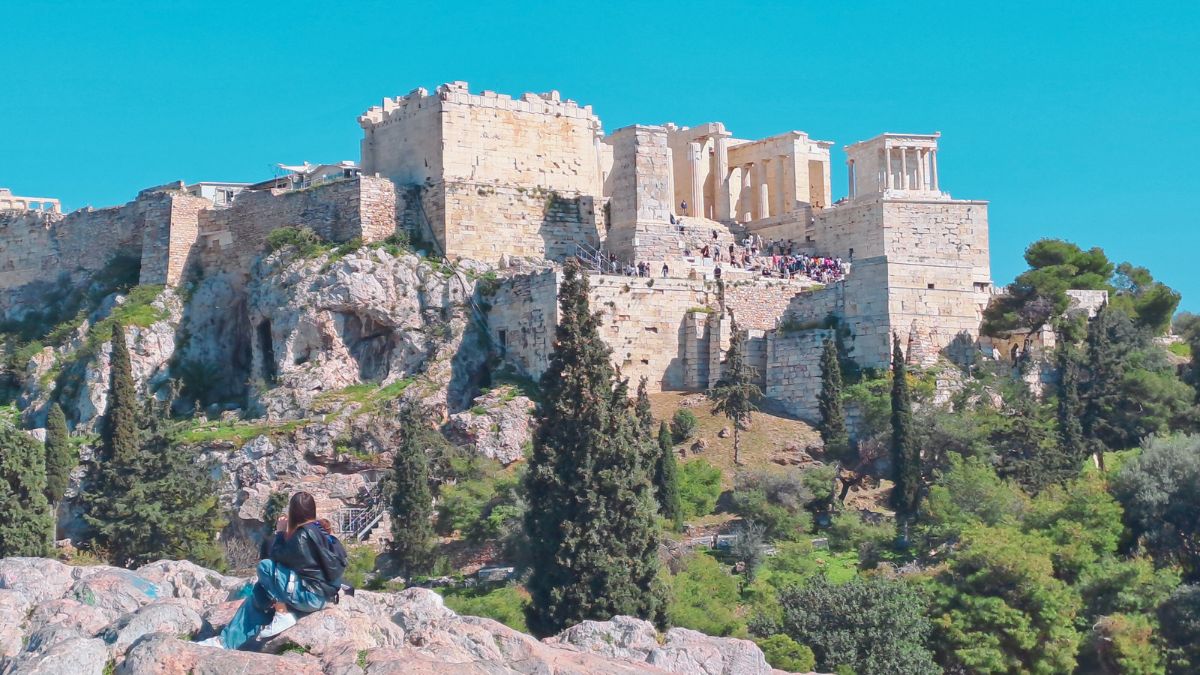
Not exactly.
Acropolis is a rocky hill, in Athens center, 156 meters above the Saronic Sea. Parthenon is one of the Temples dedicated to the goddess Athena that you can find on the Acropolis Hill. Acropolis Hill used to be the largest and most stunning complex in Ancient Greece, reaching its peak in the 5th century BCE.
Today, you can see up close the remains of a variety of constructions:
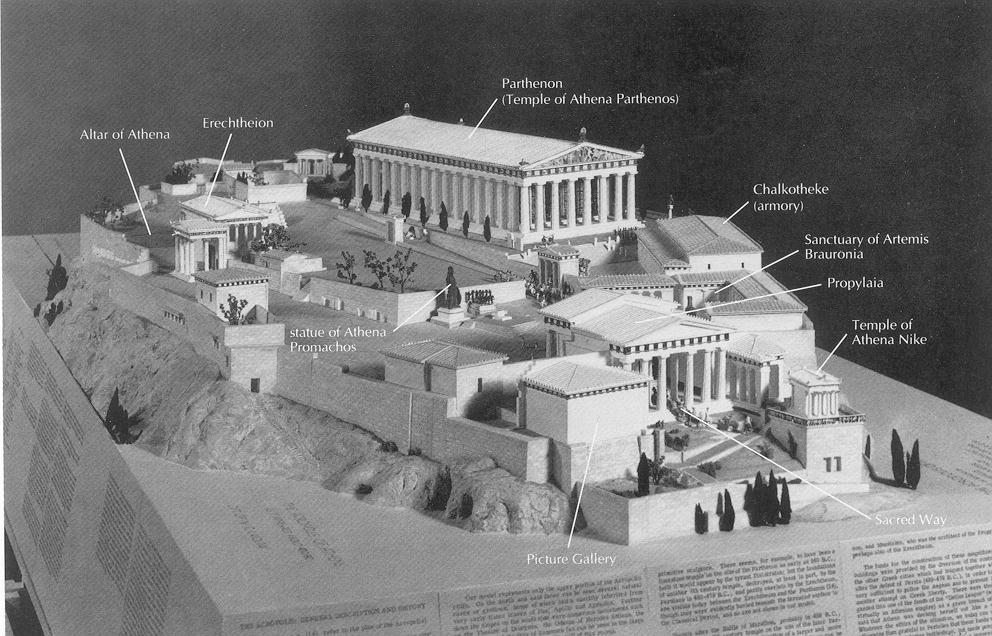
- Few traces from its Mycenean era.
- Classical Greece Temples devoted to the ancient goddess Athena (Parthenon (Athena Parthenos), Erechtheion (Athena Polias), and Athena Nike.
- Monumental Entryways (Propylaea) and the Acropolis Walls
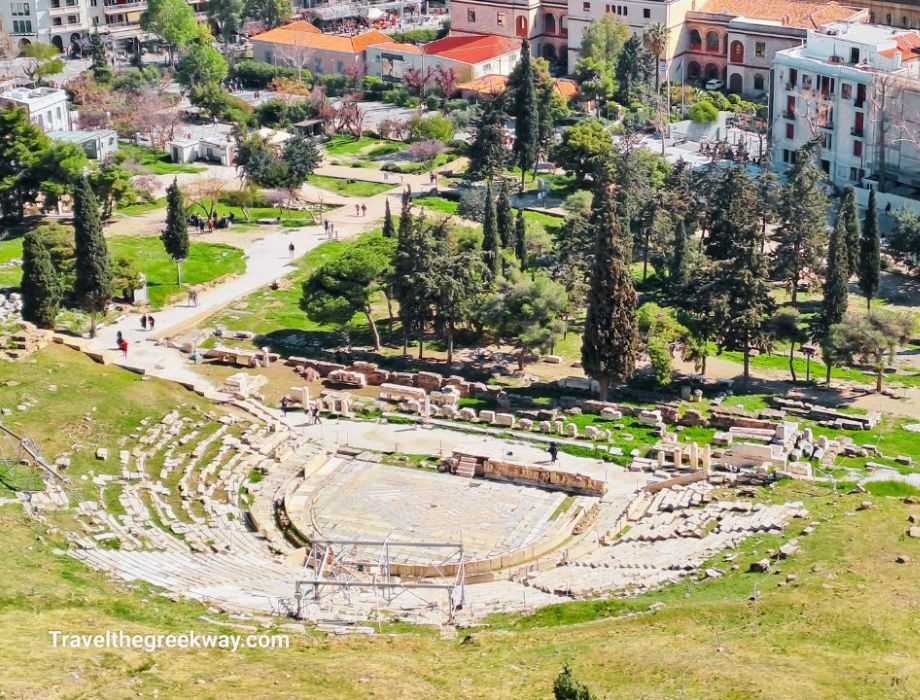
- The Greek Classical Theater of Dionysus Eleuthereus.
- Small Brauronia (or Vravronia) Sanctuary devoted to Artemis (The main Sanctuary of Artemis was in Vravrona).
- Chalkotheke.
- Roman Constructions (Rome and Augustus Temple, Agrippa’s Base, Beule Gate, Odeon of Herodes Atticus).
- Fractions of ruins from its Ottoman era.
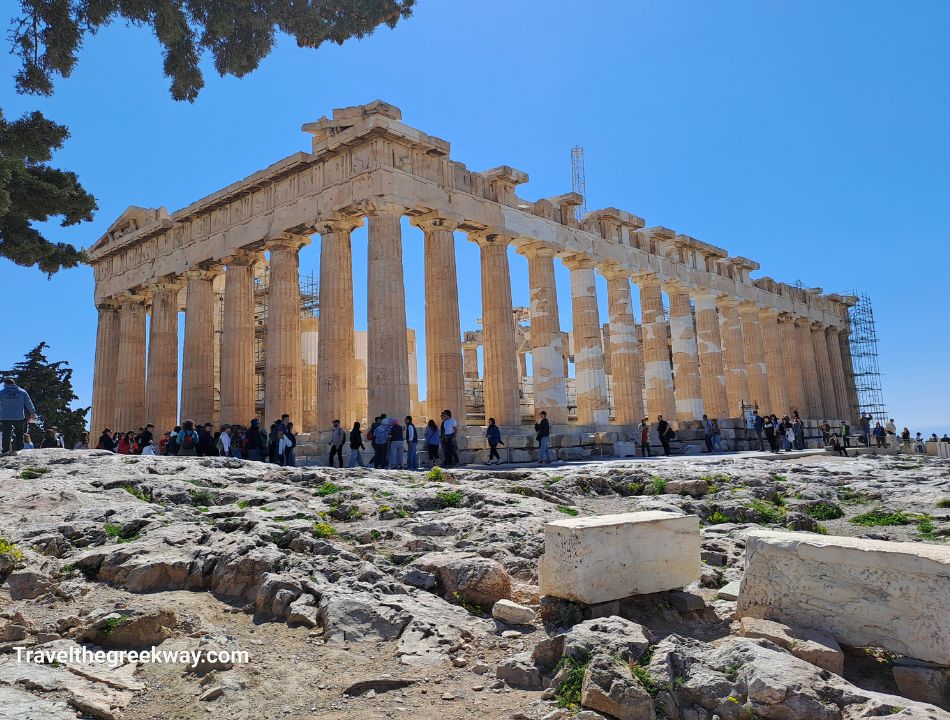
Parthenon was the main, largest, and most elaborate mixed Doric and Ionic Temple of Acropolis Hill, dedicated to Athena Parthenos (Virgin). It was built between 447 and 438 BCE and was designed by the great architects Iktinos and Callicrates.
The Parthenon Temple became the center of religious life in Athens and a symbol of Athenian democracy and power. The combination of Parthenon Doric metopes and the Ionic frieze on the walls are considered unique masterpieces.
2. Why is the Acropolis called ‘Sacred Hill’?
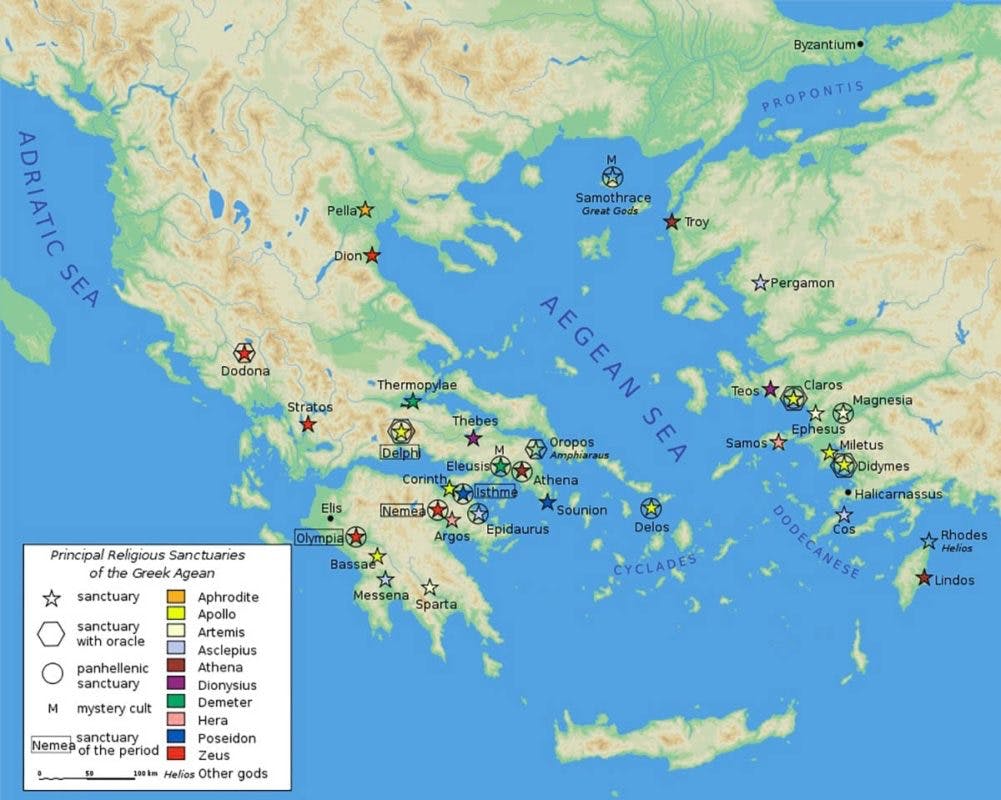
Ancient Greece had many Sanctuaries, five of which were sacred areas in Greece:
- Delphi: it was the most significant oracle of the ancient Greek world.
- Athens: it was one of the most powerful and significant ancient cities. Democracy, philosophy, science, legislation and so more were founded here.
- Eleusina: every year, the Eleusinian Mysteries took place and was one of the most significant religious sites in ancient Athens.
- Olympia in Peloponnese housed the biggest Sancturay of Zeus and the Olympic Games (to honor Olympian Zeus), the largest Panhellenic Games took place.
- and Delos island near Mykonos: Apollo was born here and it was a significant religious center that also evolved into a large commercial hub.
3. Why did the Ancient Greeks Build the Acropolis’ Temples?
The Acropolis Hill had always been an important landmark for ancient Athenians long before the Temples that you see today were built. There are traces from its Mycenaean era (1650-1060 BCE) when there was a palace built on the Acropolis, near the area where the Erechteion Temple stands.
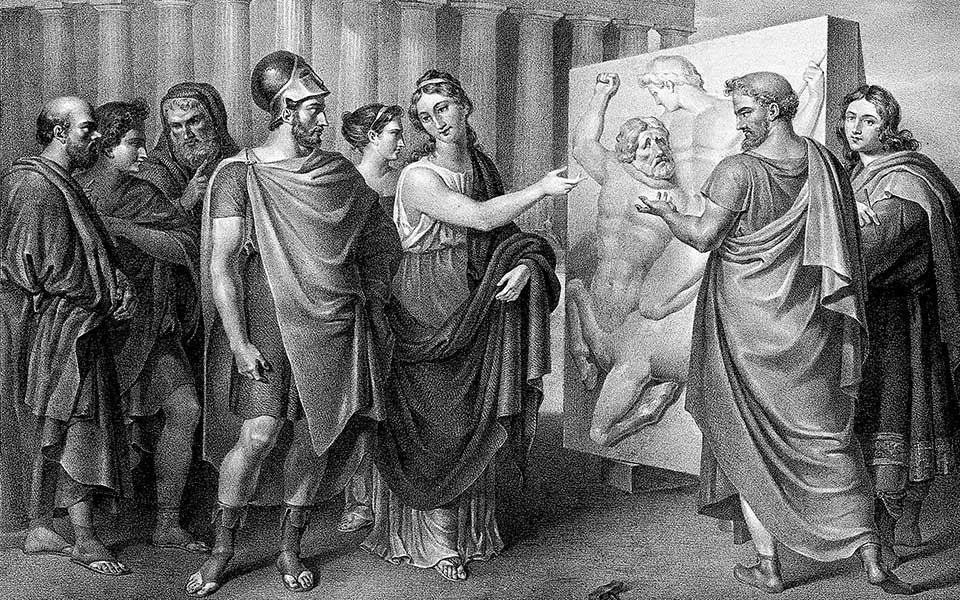
Pericles (c. 495-429 BCE), Athens ruler and orator, at the peak of Athenian Democracy, launched a monumental construction project in the Acropolis. They wanted to celebrate the Greek victory against the Persians in Marathon in 490 BCE, and in Thermopylae, Artemisio, and Salamina island in 480 BCE.
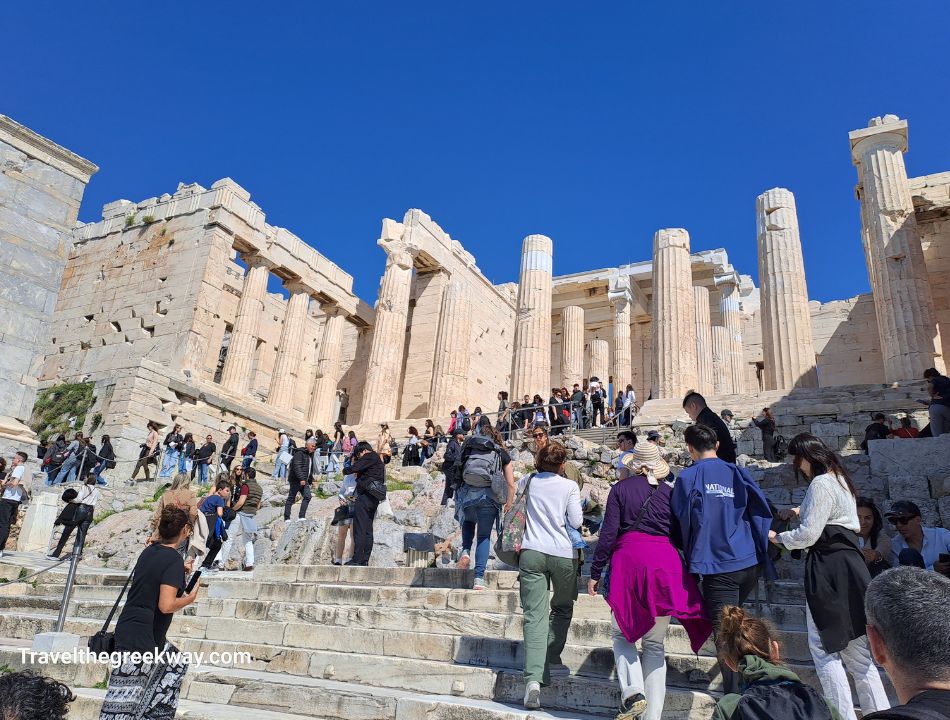
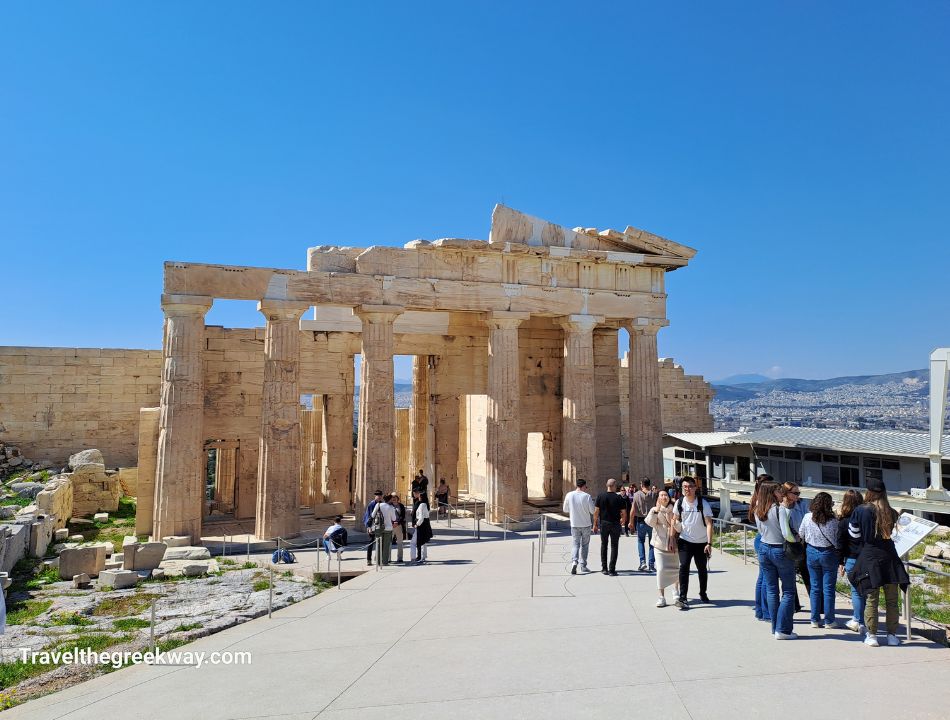
Athens, Acropolis Hill included, was destroyed in 480 BCE by the Persians. Pericles persuaded the Athenian council that they should not only replace the destroyed Temples but also build a monumental Temple for their protector goddess, Athena, as a symbol of their leadership and victory.
After the joined Greeks’ victory against the Persians, the Athenians were becoming more and more powerful. Athens, a member of the victorious Greek city-state alliance (the Delian Alliance, from the island of Delos near Mykonos), became a leader, and the other cities started paying taxes to Athens.
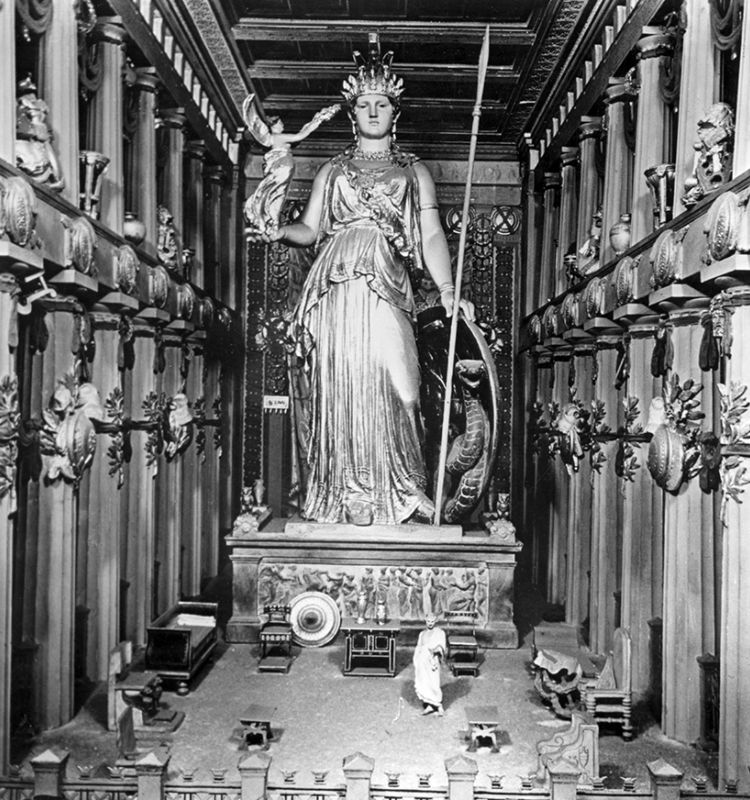
Besides the Temples, a gigantic 12-meter-high statue of Athena was created by Pheidias inside the Parthenon, using ivory and gold. The statue was removed by the Romans in the 5th century CE, some 1000 years later than after it was erected. A rumor says that it was transferred to Constantinople in the 10th century.
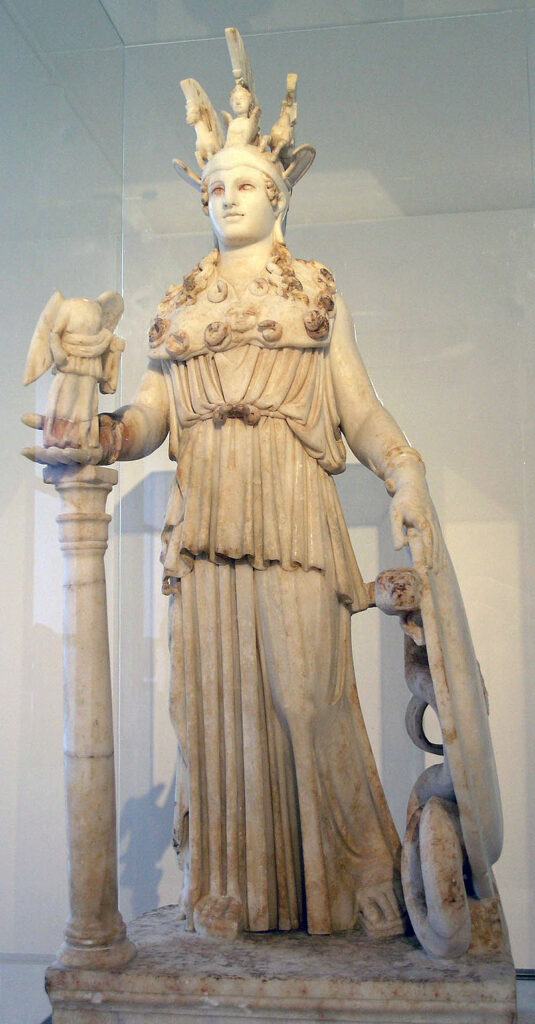
There is no trace left of this statue today but there are several small-scale Roman copies like the ones in Lenormant and Pergamon. One Roman replica, the Varvakios Athena – not the most accurate though as it misses the figures carved on the base – can be seen in the National Archaeological Museum in Athens.
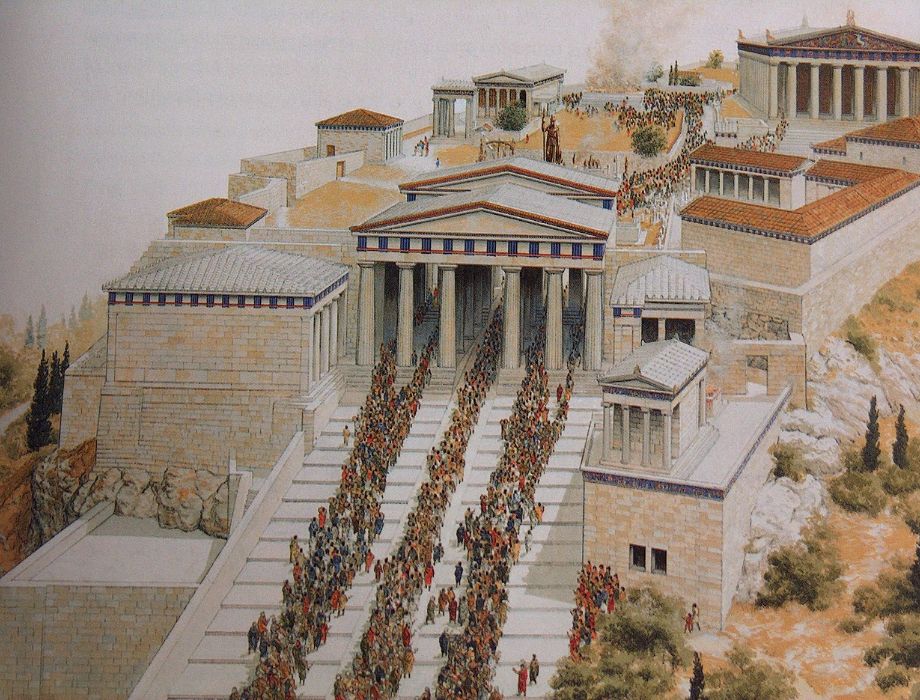
The Parthenon Temple, besides its religious purpose, was mostly a powerful symbol of Athenian Democracy, a War Monument against the Persians and the Hellenic Victory, and through the depiction of the Zoophoros sculptures, a Monument of the power and capabilities of the Athenian citizens.
4. What are the Temples on the Acropolis made of?
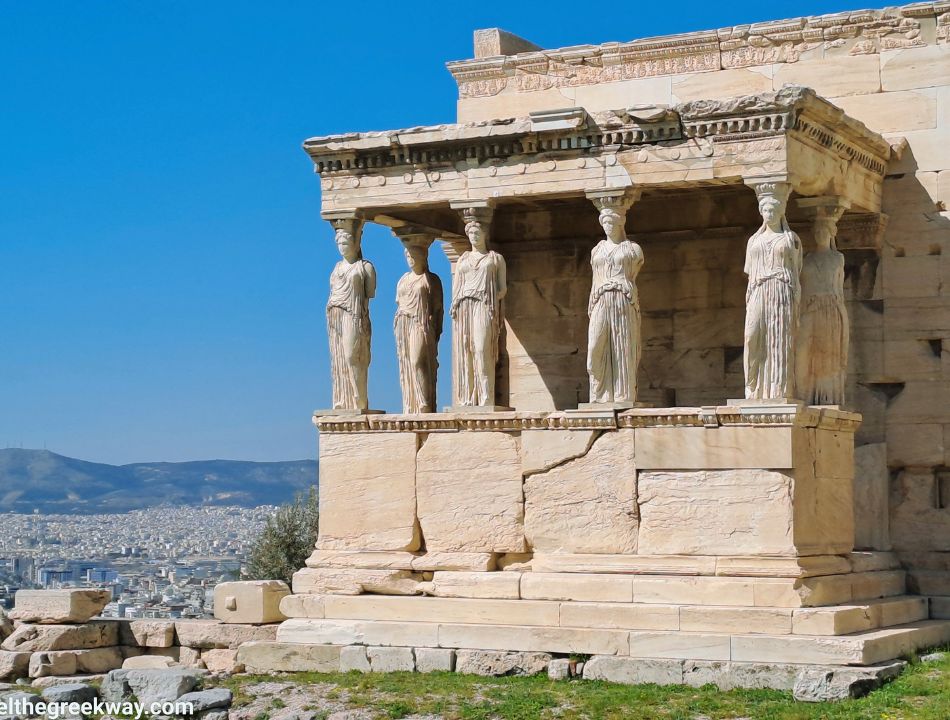
The Acropolis Temples were made from white crystalline marble quarried from Mount Pentelicus, located 10 miles northeast of Athens.
It was built from 15,000 marble blocks of various sizes. Approximately 600 craftsmen and 150 stonemasons prepared for the transportation. Possibly among them was Socrates. When he was young, he worked as a stonemason, just like his father, before abandoning this profession “for the sake of education,” as Lucian wrote.

From Mount Pentelicus, the workers using a downhill road had to transport the marble to Athens. Upon arriving they had to carry the rocks up the steep slopes of the Acropolis. It must have been a very difficult project for the workers.
5. Where is the Acropolis Entrance?
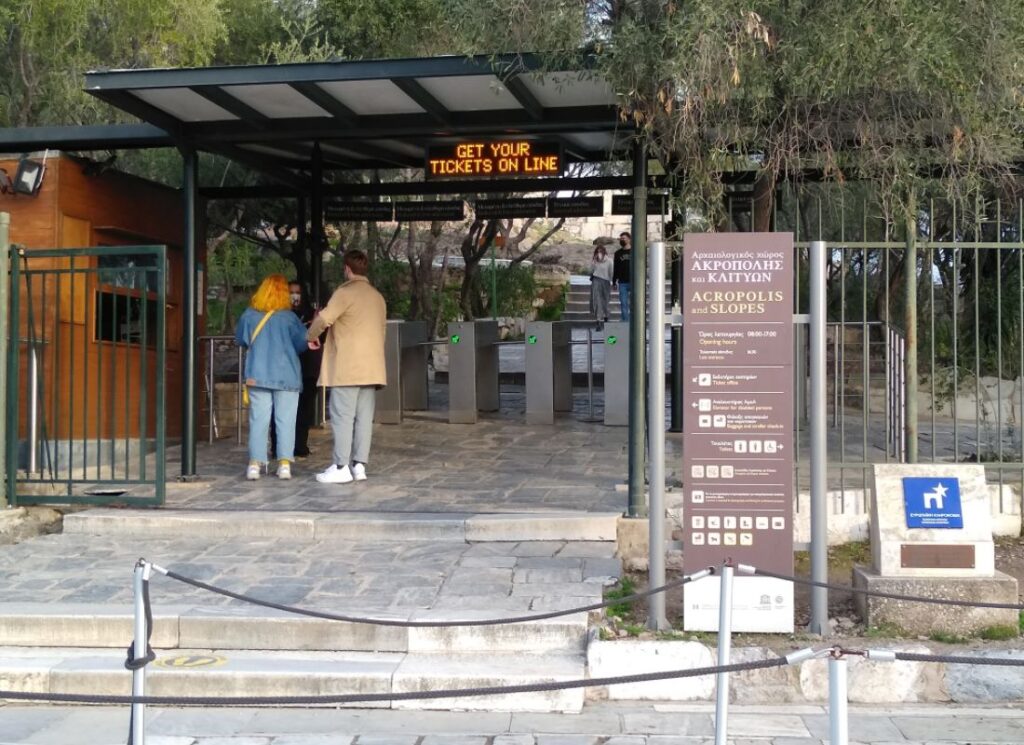
There are two entrances to the Acropolis of Athens:
The northern main entrance is close to Theorias Str. and the southern, at the junction of Thrasyllou Str. and the pedestrian Dionysiou Areoparitou right across from the Acropolis Museum.
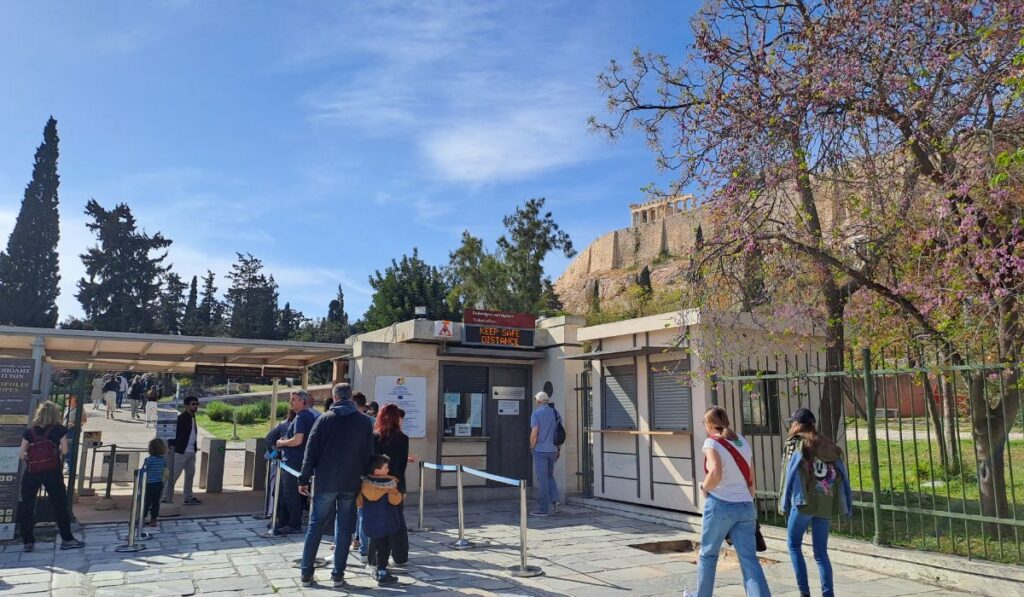
As the main entrance is close to Dionysus Restaurant and the Acropolis main parking, it is preferred by coaches and large groups. However, the queues at the main entrance are sometimes really wild.
You better use the southern entrance which is the one I prefer as you can easily see all the monuments in a more natural way and usually it is less busy. Many visitors just exit from the main entrance and never make it to the south part of the Acropolis (slopes).
Book an Acropolis Small-Group Guided Tour with an Entry Ticket

Visit the Acropolis and see Athens’ most famous monuments. Hear fascinating ancient Greek myths from your licensed guide by Get Your Guide! Check availability and prices for this amazing tour here.
6. When is Acropolis Open? When is Best to Go?
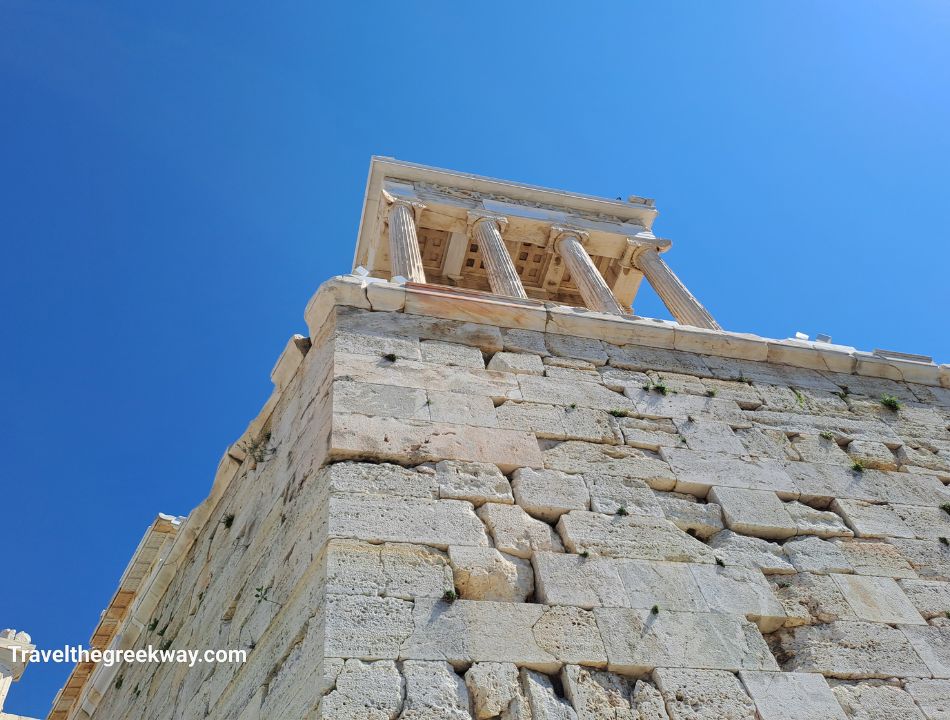
Starting from September 4th, 2023 the Minister of Culture decided that there will be a program of visiting zones in Acropolis. The maximum daily number of visitors to the Acropolis cannot exceed 20,000, a number that will be distributed into hourly zones, from 8 a.m. to 8 p.m., and will apply to all visitors, whether individual or in groups. Book your ticket on Acropolis’ official website here.
Acropolis of Athens’ time of operations are:
- Summer: April 1 to October 31 – 8 am to 8 pm (last entrance 7.30 pm).
- Winter: November 1 to March 31 – 8 am to 5 am.
- Closed on: January 1, March 25, May 1, Greek Easter Sunday, the second day of Easter, December 25 & 26.
If you are visiting Acropolis between May and September, you may encounter a lot of people. And if a cruise ship has arrived in Pireaus, then the crowds will be wild.
Try to go as early as possible in the morning or late in the afternoon.
7. How much is the ticket to the Acropolis? Can I buy it online?
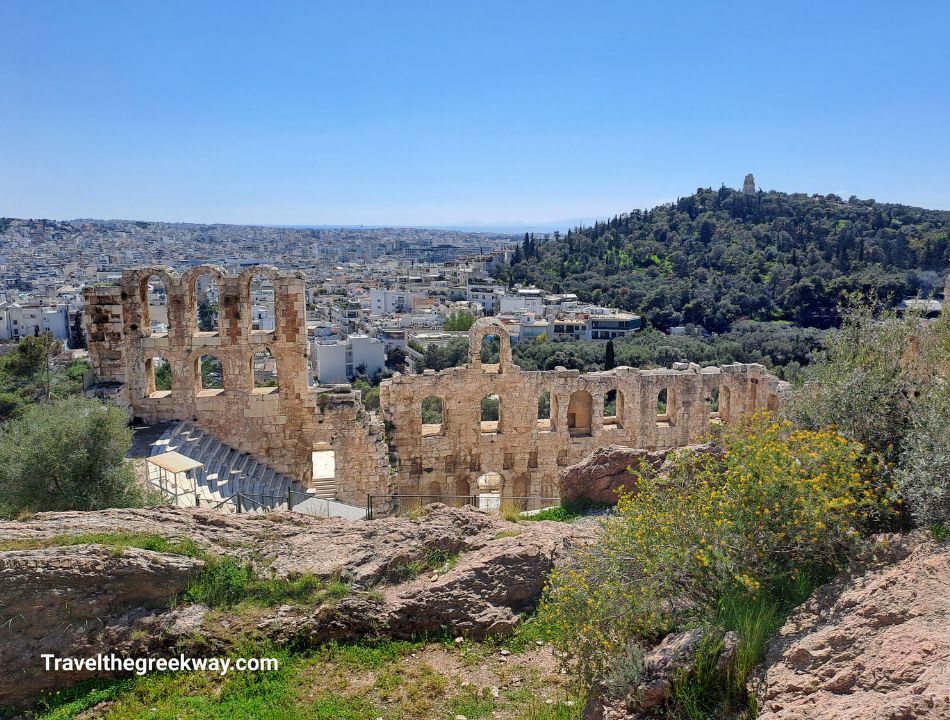
Between April 1st – October 31st the general admission ticket is €20.
Certain groups are eligible for half-price or free entrance – usually for EU citizens. Check here to see if you are eligible for reduced entrance.
The Athens combo ticket (€30) permits entry within five days to the:
- Acropolis Hill and Slopes
- Ancient Agora of Athens
- The archaeological site of Kerameikos
- Hadrian’s Library
- Aristotle’s Lyceum
- Olympeio (Temple of Olympian Zeus)
- Roman Agora of Athens.
Half-Price Entrance (not valid for the combo ticket): All archaeological sites in Greece have a half-price ticket from November 1 to March 31.
Free Entrance: From November to March, admission is free on the first Sunday of the month and on the dates March 6th, April 18th, May 18th, the last weekend of September, and October 28th.
Skip the Line
Regarding selling tickets by individuals who promise a “skip the line” service, the Greek Minister of Culture Ms. Mendoni pointed out that this is deceiving the public since such a service cannot be applied due to the nature of the monument.
Online Ticket to Acropolis
Buy your entry ticket to Acropolis in advance from the Greek Official e-ticketing service here. Follow the simple steps below to book your online ticket for Acropolis:
- Choose the region ‘Attika and Central Greece’
- then ‘Acropolis and Slopes’
- Choose the date you want to visit
- Choose your time slot
- Choose your single-use ticket (€20 in high season) or your multi-pass ticket (€30)
- However, you should keep in mind that if you change your mind, those tickets are NOT REFUNDABLE. If this is the case you better book your tickets on a participating site such as GetYourGuide.
Find here a dedicated post on the Athens Combo Ticket.
8. Parthenon throughout the centuries. Destruction in many parts…
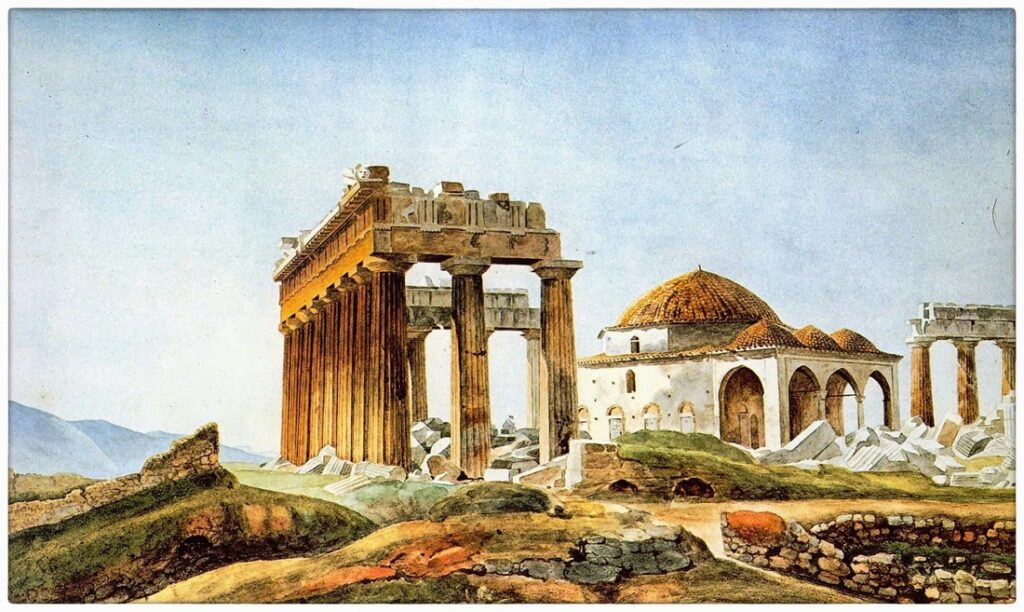
Christian religion in Greece was legalized in 313 CE and Theodosius I, Byzantine Emperor, forbade the practice of ancient Greek religion in 392 CE. Emperor Theodosius II in 435 AD ordered the destruction of ancient temples and sanctuaries, but he converted into Christian churches the most important ancient temples, the Parthenon included.
The Parthenon Temple was turned into Panagia the Athiniotissa (Virgin Mary of Athens) Christian church, a three-aile basilica in the late 6th century CE. The Christians, knocked out the eastern wall of the cella to make an apse, knocked off heads, and did other damage to the sculptures, especially the metopes, because of the pagan subjects.
During the Latin Occupation, in 1204 CE, and for 250 years, the Parthenon was turned into a Roman Catholic church.
In 1458, when the Ottoman Sultan came to Athens, he turned the Parthenon into a mosque. The Ottomans used some of the metopes for target practice.
In 1687 Parthenon was bombarded by the Venetians (more in question 9).
In 1801 Elgin removed half of its friezes and metopes (more in question 10).
In 1822 the Turks broke the pillars to remove the iron they knew the ancient Athenians had used to enforce the pillars.
In 1833, the Acropolis was finally liberated by the Greeks.
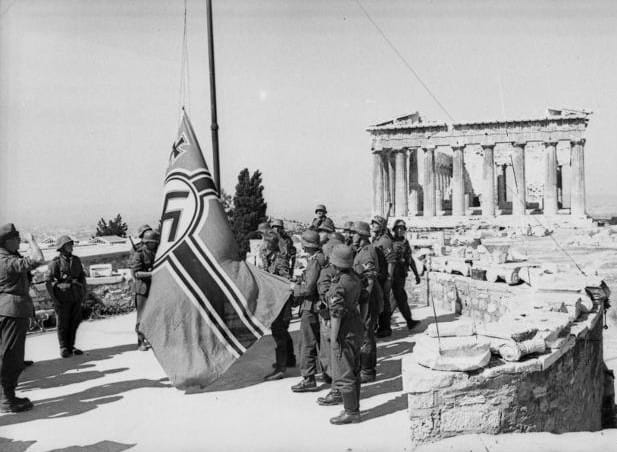
In April 1941 Acropolis was desecrated by the Nazis when they raised their swastika flag on the east edge of the Acropolis. On May 30th, 1941 two brave 18-year-old university students, Manolis Glezos and Lakis Santas climbed to the Hill and took the Nazi flag down.
Their brave act inspired many others to create resistance groups against the Nazis. Lakis Santas died in April 2011, and Manolis Glezos in March 2020, and were both buried like Greek heroes. There is a Memorial plaque of this event on the east side of the Acropolis near the raised Greek flag.
9. Why is the Southern Wall of the Parthenon Missing?
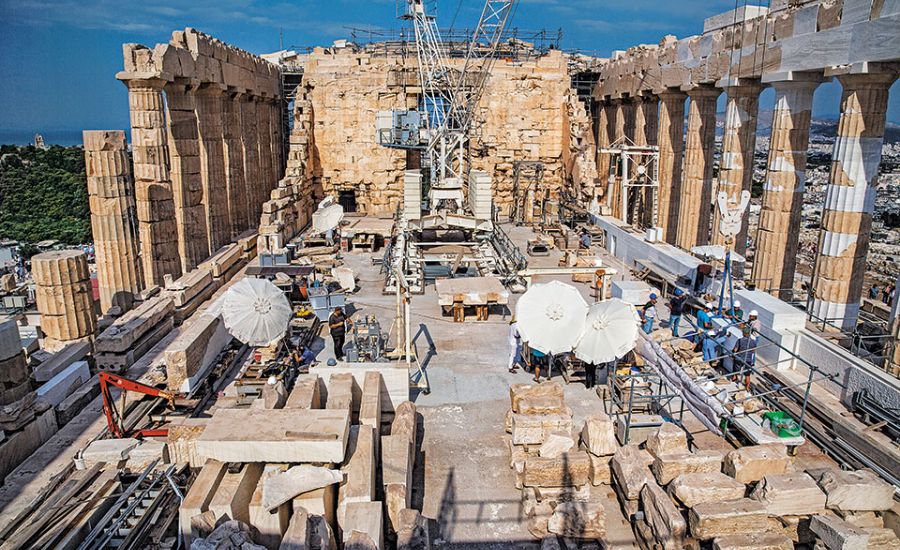
The Parthenon may have been almost 2,000 years old in 1687 CE, however, it was still in very good condition, with all walls standing and all its decoration marbles more or less in place.
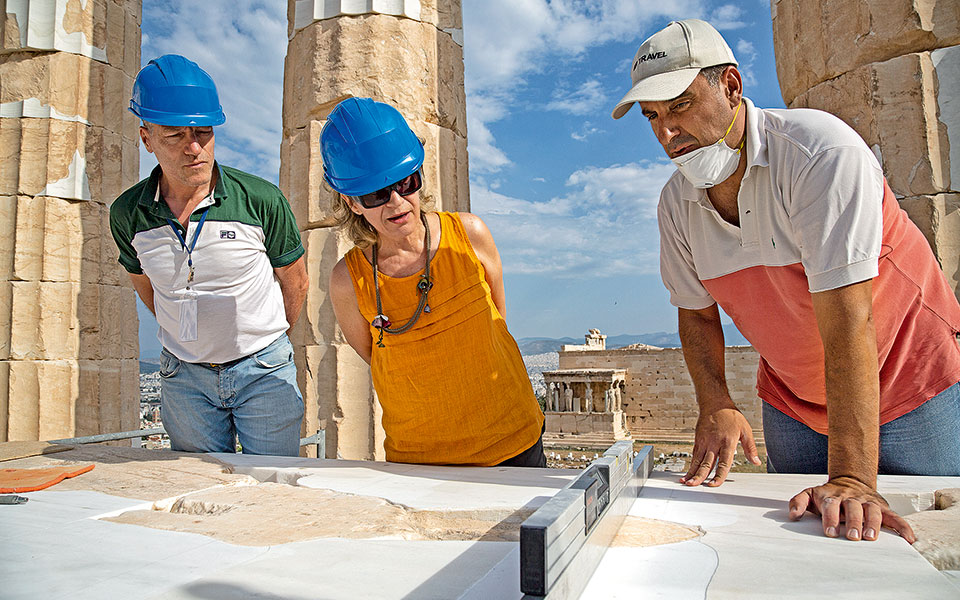
In 1687 the Venetians under the rule of Morosini seized the Acropolis. Morosini knew that the Ottomans used one of the Parthenon rooms to store the powder gun and he bombarded the Parthenon destroying all but one of its four walls. The Parthenon roof also collapsed. However, there is a 15-year restoration program of the northern wall of the Parthenon’s cella.
10. Why are the Parthenon Marbles in the British Museum?
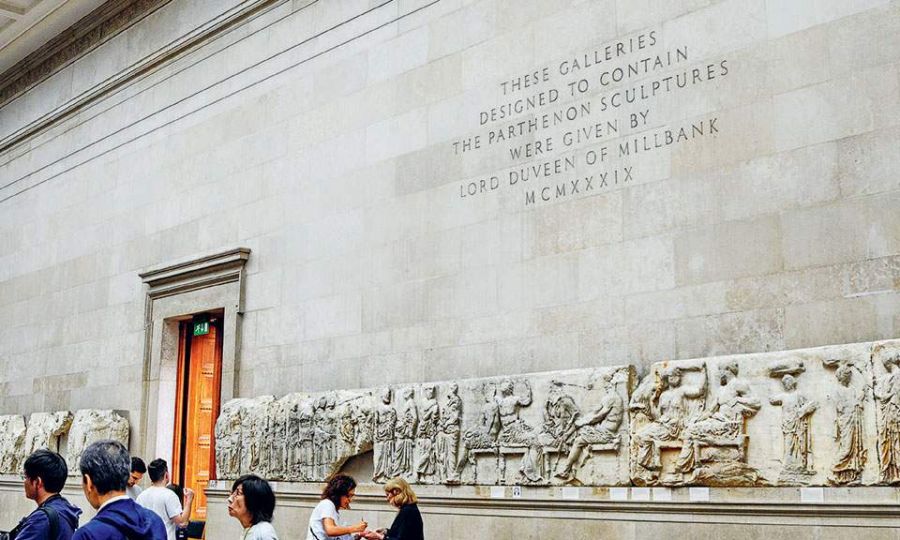
Parthenon was further damaged by Elgin between 1801 to 1803 when he violently removed – cutting them with a saw – about half of the surviving sculptures of the Parthenon, as well as sculptures from the Propylaea and one Karyatida from Erechtheion.
He, later on, sold the Parthenon Marbles to the British Museum where are still kept. The Greek government has been trying for over 40 years to persuade the British Museum to return the Parthenon Marbles where they belong, in Greece.
There are also two pieces from Parthenon marbles, a frieze and a metope in the Louvre Museum.
11. Why are the Parthenon Marbles Important?
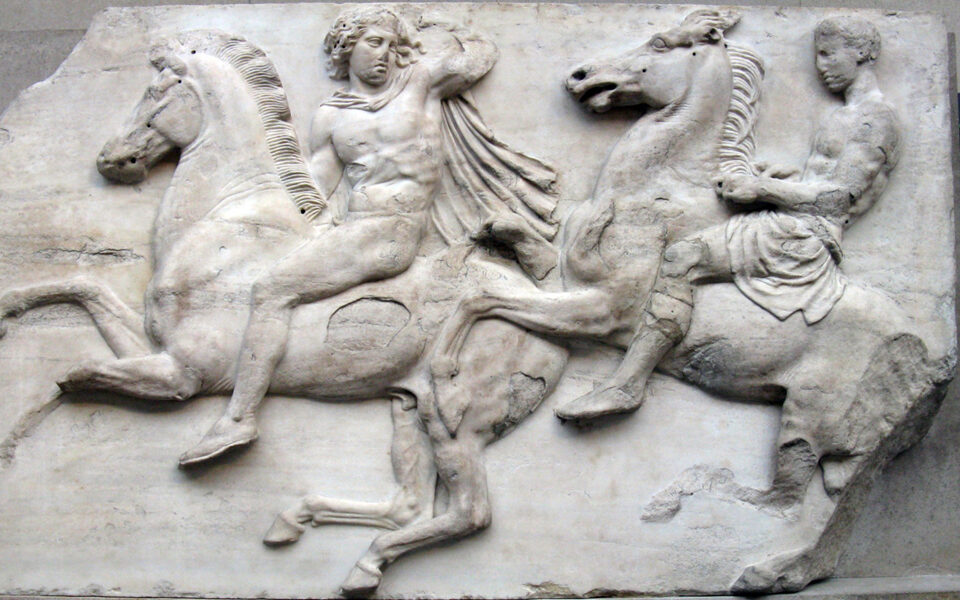
Pheidias was the master sculptor of the Parthenon Marbles, along with an army of assistant sculptors. The sculptures were set around the top part of the gigantic Parthenon, a 160-meter-long frieze consisting of 378 humans and god figures, and 245 animals, and are considered masterpieces of utmost beauty and artistic perfection.
The frieze (Zoophoros) was – probably – a sculpting story of the annual religious procession that was taking place in Athens, called the Panathenaic Procession.
A “zoophoros” is called a continuous zone with relief representations, usually, in Ionic rhythm temples and it replaced the metopes in the section above the columns of the external colonnade.
12. Are there any Sculptures Left on the Parthenon?
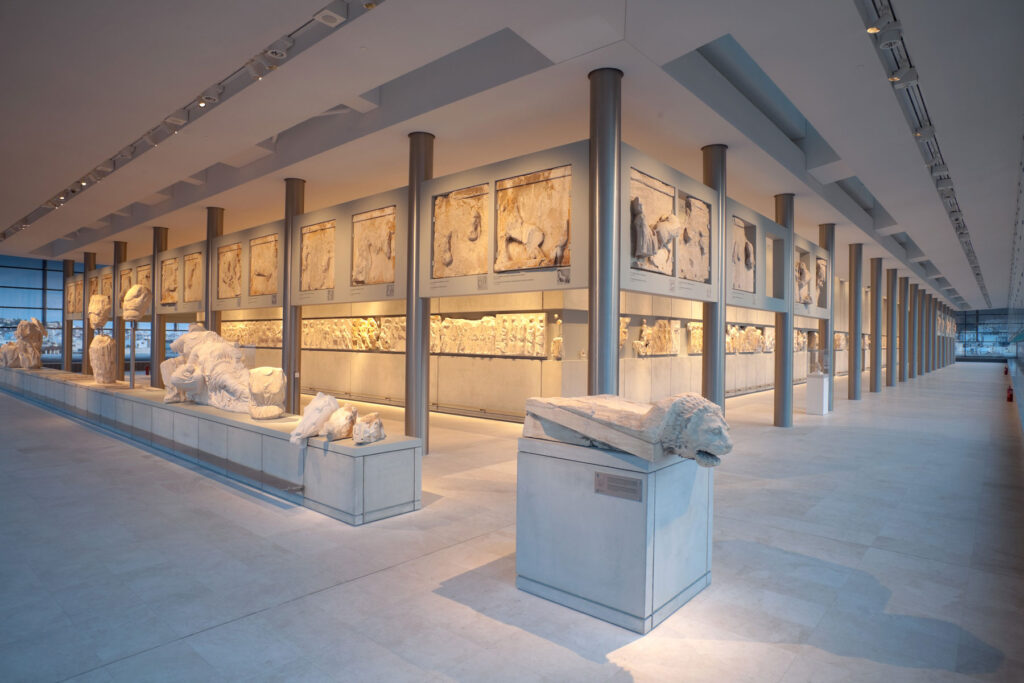
No, there are no marble sculptures left on the Parthenon. Everything you see on the site is plaster casts and the original sculptures have been moved into the Acropolis Museum to protect them from air pollution.
13. I am a Mobility-Challenged Person, Can I Visit Acropolis?
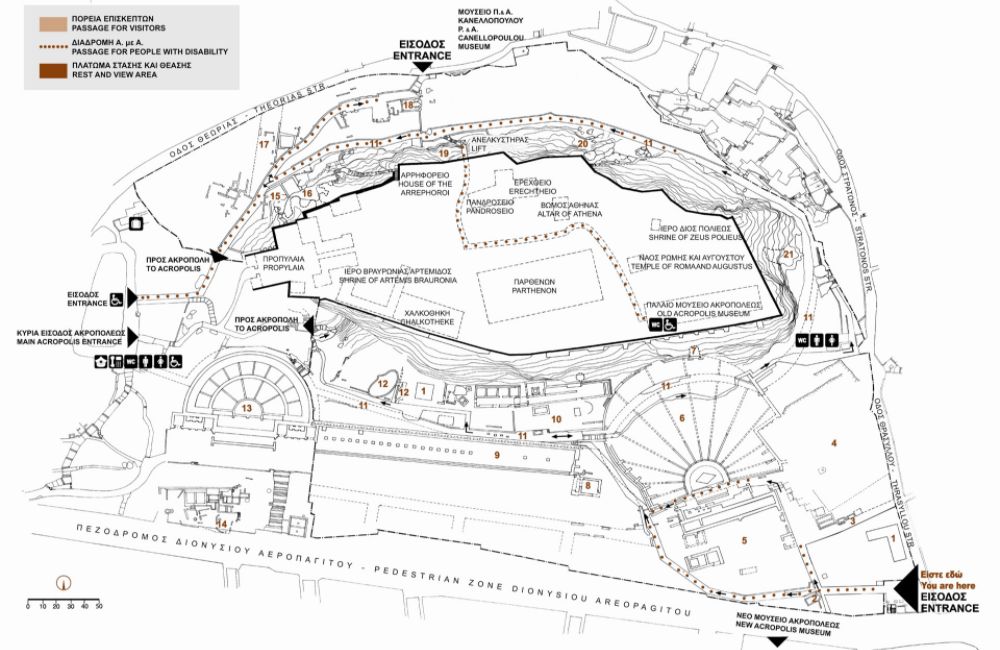
Yes, there is a new Acropolis elevator, and improved wheelchair-friendly paths were installed in 2020, but you need to go to the main entrance of Acropolis right above Dionysos Parking to access it.
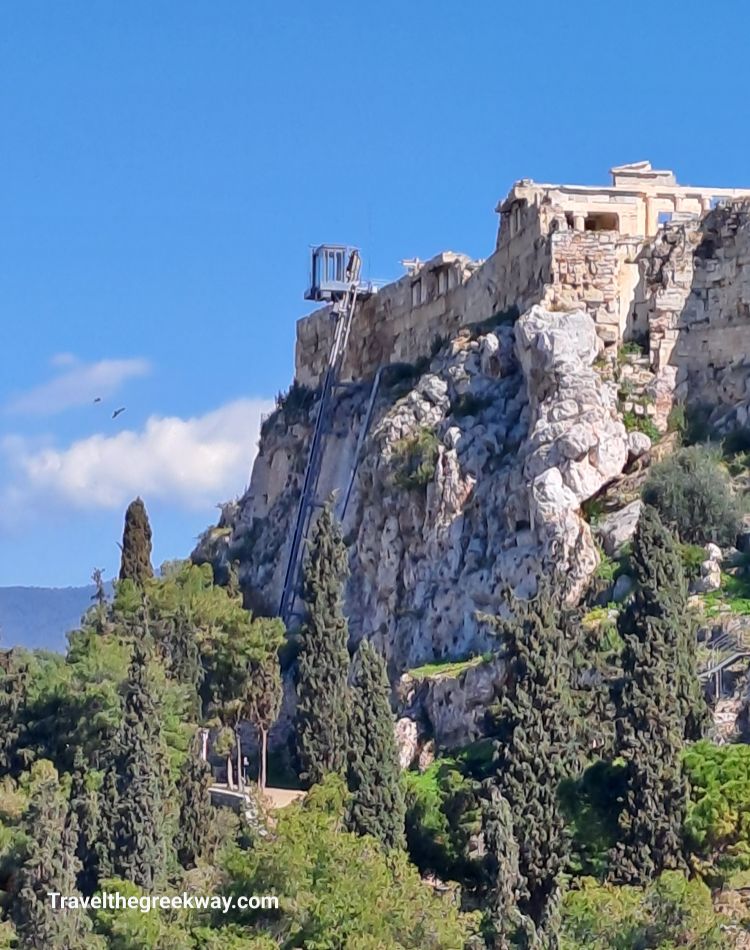
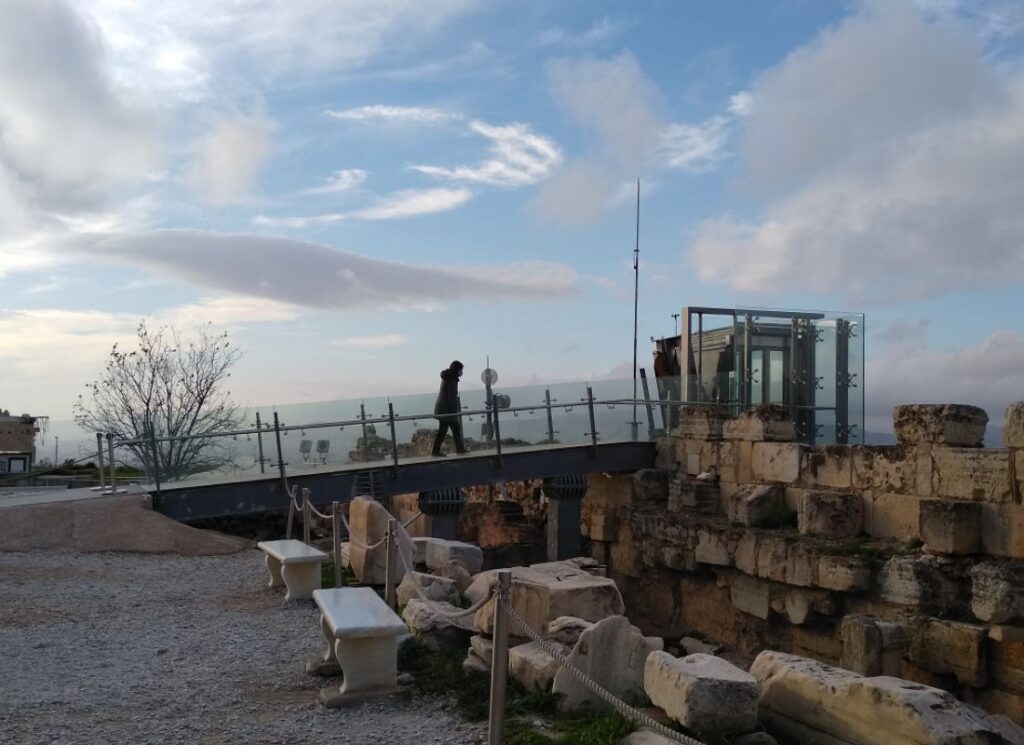
There are signs guiding you towards the entrance and the elevator as well but in case you can’t find it, when you get to the entrance gates, get your entrance ticket and afterward ask the guides for directions on how to get there. The entrance to the lift is a minute from the ticket booth.
There is always someone at the exit gates who can help you with the lift. The lift will take you straight to the top of the Acropolis, where the Temples are.
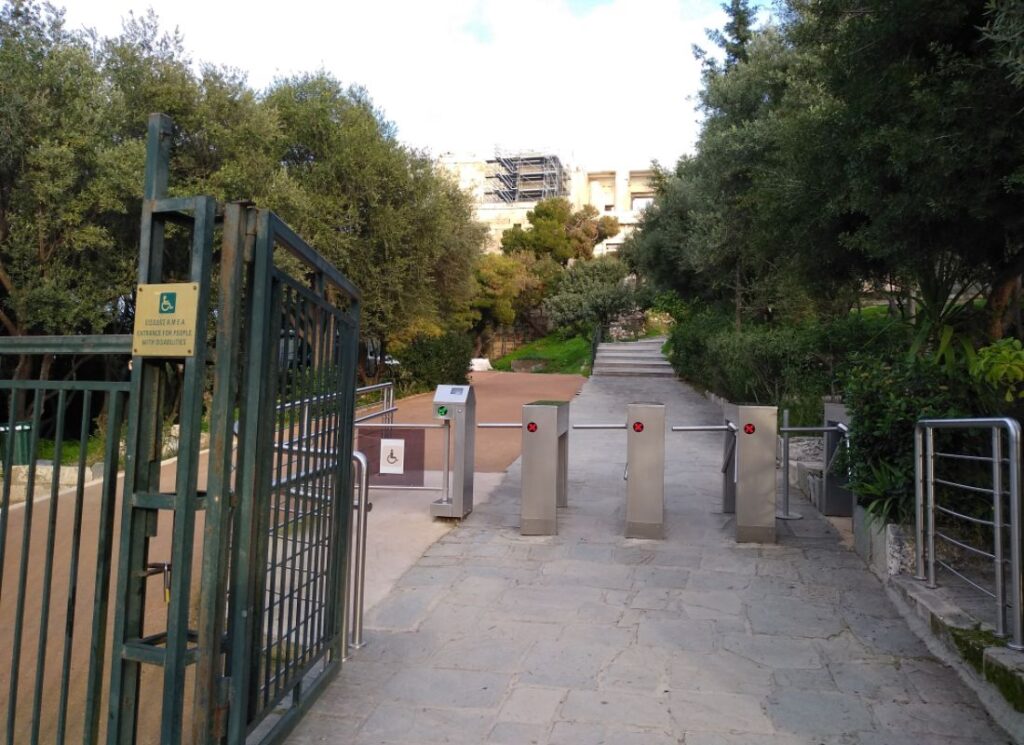
The facility is not available during extreme weather conditions and strong winds.
You may also enjoy: Accessibility and Greek sites
14. Acropolis Dress Code
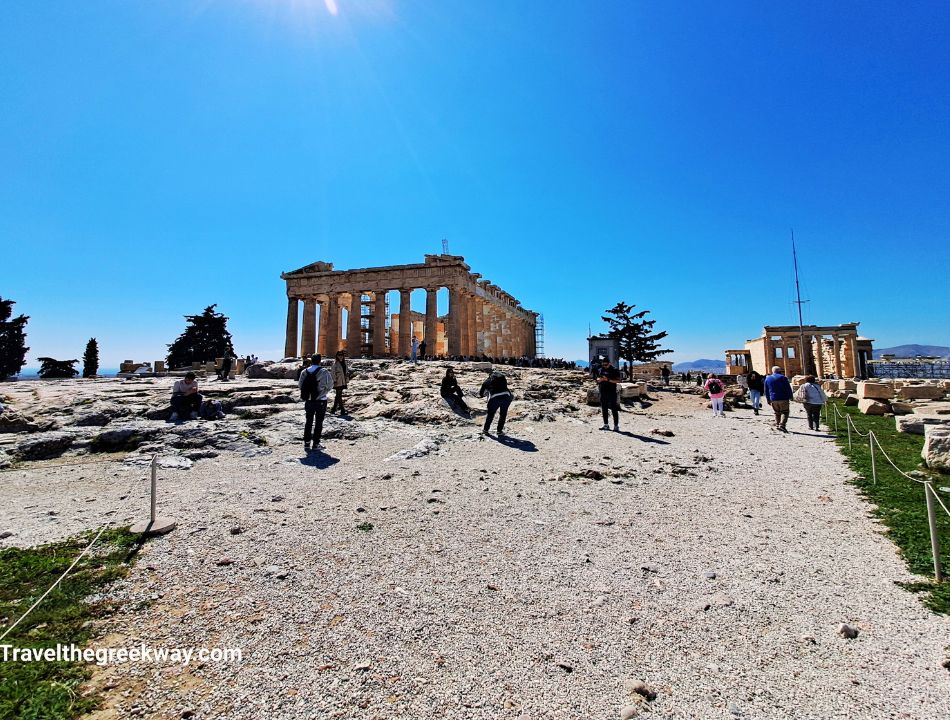
There is no dress code for the Acropolis like in Greek Monasteries such as Meteora Monasteries. If it is summer, you need a hat, comfortable clothes, good walking shoes, sunscreen, and plenty of water with you.
If it is winter, as this is a hill, it can be windy and cold and if it has rained, it can be slippery ascending the marbled steps. Again good walking shoes and warm clothes are needed.
15. Is There Anything that is not allowed in Acropolis?
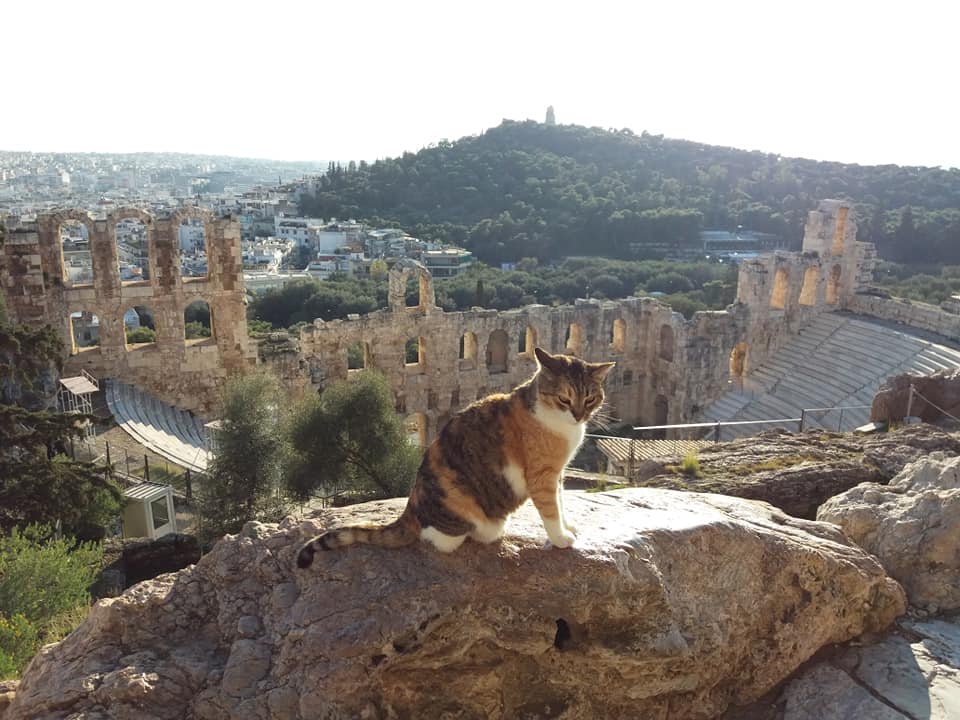
The following are not allowed inside Acropolis Hill:
- You are strictly not allowed to touch the marble surfaces – if you touch it, it just feels like a usual marble but to the marble your hands’ skin is destructive
- Any backpack or a larger bag will have to be left at the check-in before entering the Acropolis. You can take a small bag like this one for water and a purse
- Strollers for babies
- Pets
- Eat any kind of food or drink sodas – only water is allowed inside the site
- Smoke cigarettes/ vape or similar
- Play Music
- Photograph the temples for commercial use
16. What facilities are there on the Acropolis?
There are public toilets (restrooms) outside of the northern entrance and also across from the Parthenon Temple where the old Acropolis Museum building is. In the Information Center, at 18-20 Dionysiou Areopagitou Str., about 50m out of the entrance of the South Slope of the Acropolis, a WC for the physically challenged is also provided.
There are also machines to buy water bottles (€0.50 per bottle), a lift, and a small medical center.
17. Is the Acropolis of Athens the only Greek Acropolis?
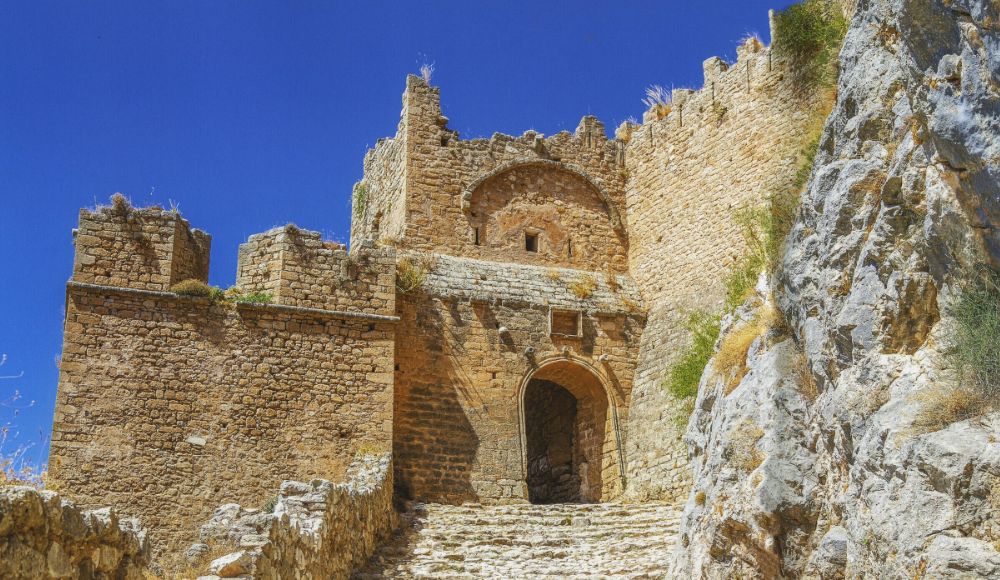
Acropolis means the edge of a city and is usually located at the highest point of a city.
Greece has many significant Acropolis all around the country such as:
- Acrocorinth in Ancient Corinth.
- Lindos Acropolis on Rhodes.
- Acropolis in Argos.
- Tiryns Acropolis in Nafplion.
Where to Stay in Athens
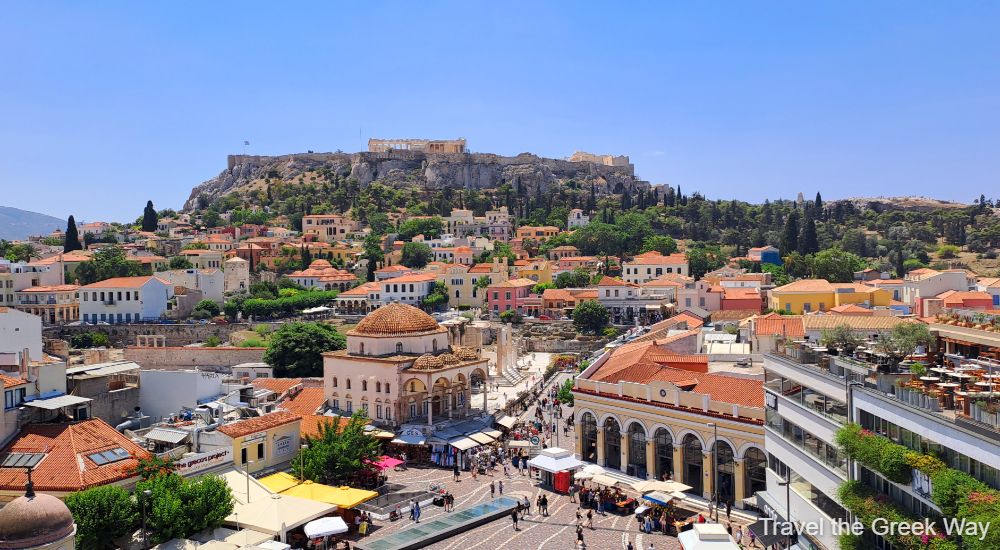
I have collected my favorite accommodation in Athens for all types of budgets and preferences for 2024:
- Best Acropolis View Hotels
- Where to Stay in Plaka, Athens’ Old Town
- Best Athens Beach Hotels
- Koukaki Hotels
How to Get to the Cyclades Islands from Athens
FERRIES: The most usual way is to take the ferry from Athens ports (Piraeus, Rafina or Lavrion). Book your ferry transfer with FerryScanner or FerryHopper, and get the best prices in the market with no hidden fees. If you travel in the summer you better book your seats in advance.
Otherwise, you can catch a flight from Athens International Airport. Find below the list of the Greek Islands that have an airport and you can fly there:
| Astypalaia | Chios | Chania | Heraklion | Rethymno |
| Crete-Sitia | Corfu | Milos | Naxos | Paros |
| Mykonos | Santorini | Syros | Skyros | Kalymnos |
| Karpathos | Kasos | Kos | Leros | Rhodes |
| Kastellorizo | Lemnos | Samos | Lesvos | Ikaria |
| Kefalonia | Zakynthos | Kythira | Skiathos |
Plan My Trip to Greece
Do you need a custom travel itinerary or a transfer within Greece? Are you traveling solo, with your family or friends and need a tailor-made multi-day tour or a transfer?
If yes, please visit my dedicated Plan My Trip Page for a free itinerary!
How to Get to Athens Port (Piraeus) from Athens Airport

- Bus: If you are arriving at Athens International Airport you can travel straight to the port by taking the X96 express bus (€5.5, children <6 yo, free entrance), which departs every 40 minutes and the average trip lasts 1 hour – runs 24/7.
- Metro: (€9) is easily found across airport arrivals (blue line – M3) going directly to Piraeus port. The average trip to Piraeus lasts 1 hour.
- Taxis are available in front of the airport (around €40 to Athens, €55-60 to Piraeus (depending on the traffic in Kifisos), and take up to 3 or 4 people with small luggage)
- Rent a car with Discover Cars for reliable, new cars at affordable prices
- You don’t like driving but love hassle-free solutions? Book a Private transfer with an English-speaking driver from Athens International Airport to Piraeus Ferries, or anywhere else in Greece
- Are you looking for domestic flights in Greece? Check out the official Aegean Airlines Website.
Some of my Favorite Travel Resources for Greece
- ‘Hello’ and ‘Thank You’ in Greek: “Ya sou” and “Efharisto”
- Booking.com: I use Booking.com mostly for Europe. It has over 1 Million properties to choose from, including everything from hotels to apartments and even hostels. And free cancellation!
- Expedia: I use Expedia for the best hotel descriptions and amenities and a rewards points system for the rest of the world.
- All-Inclusive Resorts in Greece
- FerryScanner to book ferries to the Greek Islands
- Rent an Affordable Car in Greece
- Athens Metro Website (timetables and ticket info)
- Map of Athens Metro
- Trains (Hellenic Train)
- Public Buses KTEL
- Get Your Guide: For all your day or multi-day tours and city guide needs, I use Get Your Guide
- Emergency Numbers Anywhere in Greece: AMBULANCE 166 – FIRE 199 – POLICE 100– EMERGENCY NUMBER 112

Is it true that visitors can not wear backpacks at the acropolis?
If yes, can we wear shoulder totes for our water bottles, windbreaker, sunscreen, my collapsible cane (I have a bad hip that sometimes acts up), cooling cloth, etc.
We are going to Athens in October 2023.
Hello Lynn
Yes, it is true, and thank you for pointing this out. All big backpacks will be left at the check-in at the entrance of the site. You can only carry small bags with your bottle of water or purse. You don’t need a windbreaker and cooling cloth in Acropolis in October, it will be cooler. Just get water, and a hat and apply sunscreen at your hotel before you get into the Acropolis.
Thank you and wish you have a great time in Athens 🙂
Evgenia